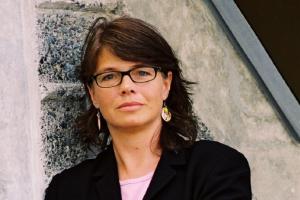
Professor Margot Young is passionate about human rights and social justice. She opens up about her recent research into housing justice, and her thoughts on the situation unfolding at Oppenheimer Park. Professor Young began her teaching career at the Faculty of Law, University of Victoria in 1992 after doing graduate work at the University of California, Berkeley in the fields of feminist legal theory and reproductive technologies. Her focus quickly shifted to the areas of constitutional law, in particular, equality law and theory, and social welfare law. She has continued to teach and research widely in these areas. Professor Young has worked with a number of non-governmental groups on issues of women's economic equality and justice. She has authored alternative NGO reports for Canada's periodic reviews under the United Nations ICESCR, ICCPR and CEDAW Committees. Recently she is co-author of the collection Poverty: Human Rights, Social Citizenship and Legal Activism, published by UBC Press.
You’re on sabbatical this academic year finishing up a big project. What are you working on?
I’m working on a very interesting multi-disciplinary project on housing justice. It focuses on issues around housing adequacy and availability in Vancouver, which is a critical issue in this city. I’m the co-principal investigator with Dr. Penny Gurstein (Director of the School of Community and Regional Planning) and we were fortunate enough to get funding from the Peter Wall Solutions Initiative – an innovative funding project that gives UBC researchers a chance to work with community groups to effect social change.
The project has three focuses in particular: legal avenues for change; the policy and legislative reform that is needed; and community engagement and education. The key goal is ensuring that the project seeds a collaborative conversation with substantial public involvement.
How did you get involved in housing justice issues?
I was the member of an informal working committee with the mandate of building better relationships between UBC and the Downtown Eastside. We talked about ways to, connect university faculty with community leaders to develop real world solutions to social issues. It was a stimulating opportunity to gain an in-depth appreciation for how the university does and might engage with the wider community.
It was there I met Penny: a serendipitous meeting of expertise. I have always had a very strong interest in socio-economic injustice and human rights, and her expertise was in housing. The rest is history.
What is the biggest challenge with this work?
It’s a huge project. The breadth of the issues involved is, of course, extremely complex. Homelessness is the most visible piece but it is only part of a much larger picture. The diverse range of housing needs and circumstances make housing clearly what some analysts call a “wicked problem” -- involving enormous complexity and the need for multiple levels of public and private collaboration and social reform.
You’ve been quoted in the media recently offering commentary on the situation in Oppenheimer Park. What’s going on there?
To really understand what is going on in Oppenheimer Park, you’d have to talk to the people in Oppenheimer Park. However, as someone with a strong commitment to research and human rights, I can say that the Oppenheimer Park situation is a timely reminder of some critical issues we face in Vancouver.
The park – which is in Vancouver’s Downtown Eastside,--can serve as an outdoor sleeping area for a number of residents in the area. It provides a space for individuals who are homeless “sleep rough”. Also, many of those who are regarded as “housed” occupy substandard housing/shelter, such as SROs (Single Room Occupancies) which can be unbearably hot in the summer, and, year-round, are infested with bugs and are unsafe. Sleeping in the park is often preferable to these appalling living conditions.
This year the City asked those sleeping in the park to move on. The tent city developed in response to this municipal action and now constitutes an organized protest about the city’s inability to house its most vulnerable residents.
The context of the land is also important. Oppenheimer Park, like much of Vancouver, sits on the unceded, traditional and ancestral land s of the Coast Salish people. We know that 1/3 of the street homeless in Vancouver are Indigenous, comparted to 2% of the population as a whole. In other words, a disproportionate number of Indigenous people are homeless in Vancouver.
The situation in Oppenheimer Park then has become a symbol not only of housing advocacy and the inability of the city to provide adequate housing, but also, specifically, of the impact of housing insecurity on Indigenous people
What’s the solution?
I understand that the city is trying to find housing for every member of the tent circle at Oppenheimer Park, but we’re not going to see significant improvement in what is really a housing crisis across Canada until we have consistent and thoughtful commitment from federal, provincial and local government to ensure adequate housing provisions. Leaving it up to the market alone is no solution
With all the complexities and challenges, what keeps you motivated to work on this issue?
Oh, that’s easy. The issues are so important and there is such a strong need for legal expertise in the area of social justice struggles.
First published on August 19, 2016.